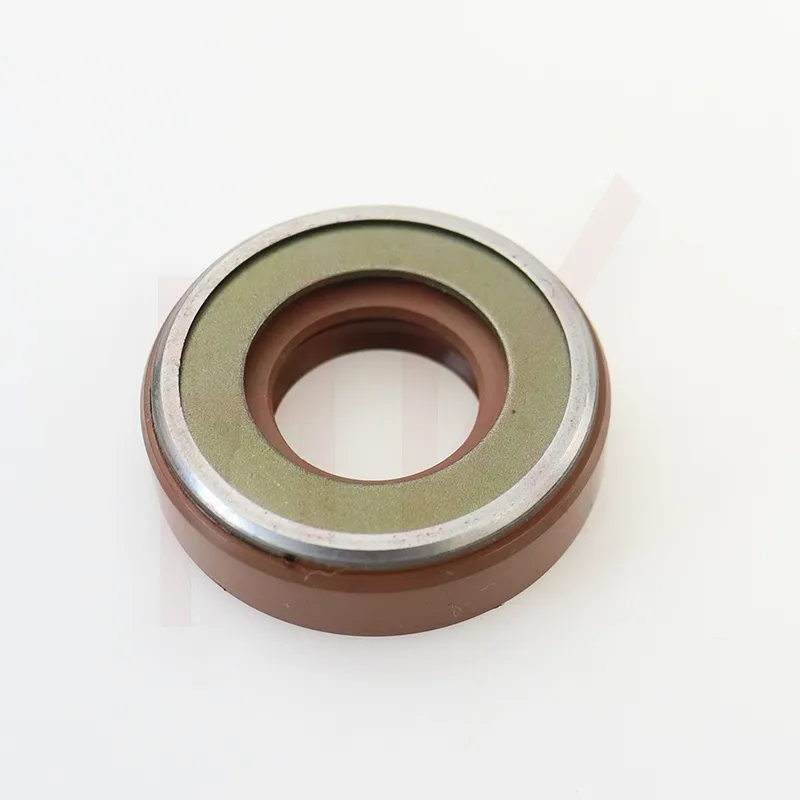nov. . 14, 2024 02:58 Back to list
12x22x7 oil seal
Understanding the 12x22x7 Oil Seal A Comprehensive Overview
Oil seals play a crucial role in various mechanical systems, ensuring that lubricants remain inside the machinery while preventing contaminants from entering. Among the myriad of oil seals available in the market, the 12x22x7 oil seal stands out due to its specific dimensions and applications. In this article, we delve into the details and significance of the 12x22x7 oil seal, exploring its features, applications, and maintenance tips.
What is an Oil Seal?
An oil seal, also known as a shaft seal, is a mechanical device used to seal the interface between a stationary and a moving component, typically a rotating shaft. It is designed to prevent the leakage of lubricants and the ingress of dirt, dust, and moisture. Oil seals are commonly made from elastomers, rubber, or plastic, and they often have metal support for enhanced durability.
Dimensions Explained
The designation 12x22x7 refers to the oil seal's dimensions in millimeters. Here’s what these numbers mean
- 12 mm This is the inner diameter (ID) of the seal, which is the size of the hole that fits around the shaft. - 22 mm This is the outer diameter (OD) of the seal, indicating the total width of the seal when installed.
- 7 mm This measurement refers to the thickness of the seal, which is crucial for ensuring a proper fit and seal performance.
These dimensions are essential for ensuring that the oil seal fits correctly in its application, thus preventing leaks and extending the lifespan of the machinery.
Materials and Types
The 12x22x7 oil seal can be made from various materials, depending on the operational requirements and the type of fluid being sealed. Common materials include
- Nitrile Rubber (NBR) Known for its excellent oil resistance, NBR is widely used for sealing applications, especially in automotive and industrial contexts.
- Fluorocarbon (FKM) This high-performance material is used for applications involving high temperatures and aggressive chemicals.
- Silicone Suitable for high and low-temperature applications, silicone seals are flexible and resilient, making them ideal for various environments.
12x22x7 oil seal

In addition to material variations, oil seals also come in different designs, such as single-lip and double-lip seals. The double-lip design provides enhanced sealing capabilities, which is essential in applications where external contamination is a concern.
Applications of the 12x22x7 Oil Seal
The 12x22x7 oil seal is commonly used in various applications across multiple industries, including
1. Automotive In vehicles, these seals are found in engines, transmissions, differentials, and wheel hubs to prevent oil leaks and maintain lubrication.
2. Industrial Machinery Many types of rotating machinery use oil seals to protect bearings and other critical components from lubricant loss and environmental contaminants.
3. Agricultural Equipment Tractors and other farming machinery often utilize oil seals to ensure reliability in demanding operational conditions.
4. HVAC Systems In heating, ventilation, and air conditioning units, oil seals help improve efficiency by minimizing leaks of refrigerants and lubricants.
Maintenance and Replacement
Regular maintenance is crucial for ensuring the longevity and effectiveness of oil seals. Here are some tips
- Inspect Regularly Visually inspect oil seals for signs of wear, damage, or leakage. Early detection can prevent more significant issues.
- Replace as Needed If an oil seal is leaking or showing signs of wear, it should be replaced promptly. Operating machinery with compromised seals can lead to greater damage and costly repairs.
- Use the Right Tools When replacing oil seals, always use the appropriate tools to avoid damaging the seal or the housing.
Conclusion
The 12x22x7 oil seal is a vital component that facilitates the efficient operation of various mechanical systems. Understanding its dimensions, materials, and applications is essential for anyone involved in machinery maintenance or design. By ensuring proper installation and regular inspection, users can maximize the performance and lifespan of equipment, ultimately leading to better efficiency and cost savings. As technology advances, the evolution of oil seals continues, promising even greater reliability and performance in the future.
-
The Trans-formative Journey of Wheel Hub Oil Seals
NewsJun.06,2025
-
Graphene-Enhanced Oil Seals: Revolutionizing High-Pressure Oil Sealing
NewsJun.06,2025
-
Future of Hydraulic Sealing: Advanced Intelligent TCN Oil Seals
NewsJun.06,2025
-
Don’t Let a Broken TCV Oil Seal Ruin Your Day
NewsJun.06,2025
-
Bio-Inspired Dust Seals for Better Sealing Performance
NewsJun.06,2025
-
Biodegradable and Sustainable Hydraulic Seal Materials
NewsJun.06,2025
-
Top Oil Seal Solutions for Your Industrial Needs
NewsMay.22,2025
Products categories
















